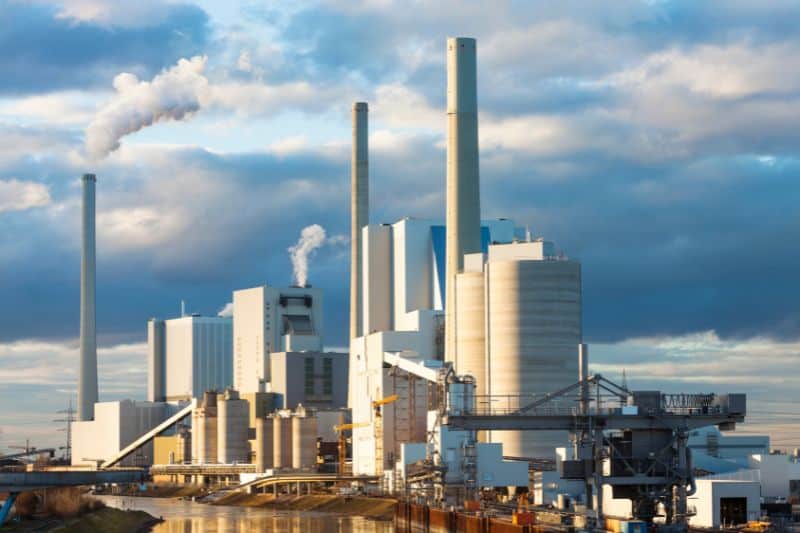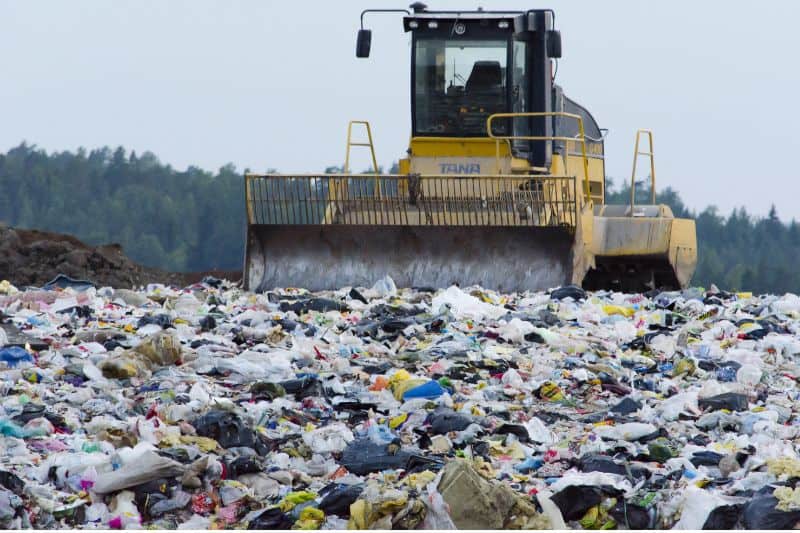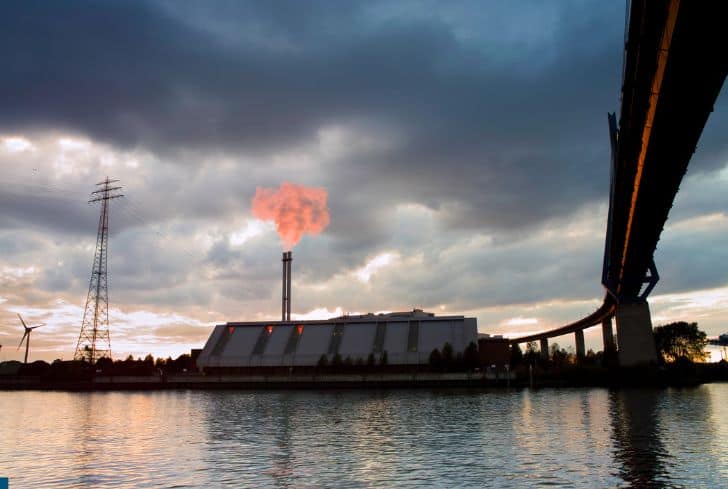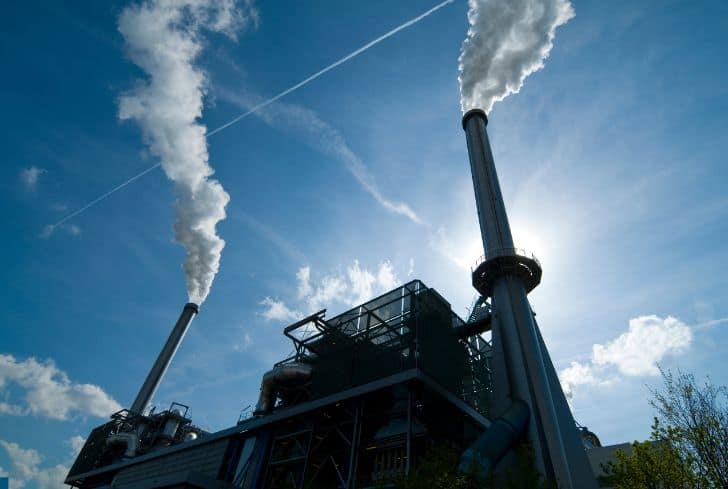There are several methods that governments use to manage waste. Apart from methods that fall under the 4Rs (reusing, recycling, repurposing, and reducing), the two most common waste management methods are the use of landfills and incineration.
In this article, we will be focusing on incineration, its pros and cons, and our suggestions on the use of this method for waste management.
What is Waste Incineration?
Incineration is a method of waste treatment involving the burning of organic materials found in waste. This, along with other high-temperature waste management techniques, is collectively known as thermal treatments.
In simpler terms, waste Incineration involves converting waste materials into ash, flue gas, and heat.
The ash mostly consists of inorganic waste components and can be in the form of solid lumps or particulates carried by the flue gas.
The flue gases are excess gas byproducts of the incineration and should be cleaned of particulate and gaseous contaminants before it is released into the air.
As for the heat generated by the process, it can be useful in several ways, such as producing electricity.

Now, waste incinerators generally have higher efficiency and lower emissions than landfills, which has geared their increasing adoption. But then, it is worth noting that incineration doesn’t come without considerable disadvantages.
In the sections below, we will discuss in detail the advantages and disadvantages of waste incineration.
Let’s have a look at the advantages and disadvantages of incineration.
Advantages of Waste Incineration
As already pointed out, there are lots of advantages to incinerating waste. Some of the common ones include:
1. Reduced Quantity of Waste
Incinerators have the capability to reduce the overall quantity of waste by up to 95%. Additionally, they can decrease the solid volume of the original waste by approximately 80-85%, which may vary depending on the specific components present in the solid waste.
By so doing, incineration reduces dependency on landfills. It won’t entirely remove the need for a dumping ground, but it will significantly reduce the size of land needed.
For countries with limited space, like Japan, this is particularly helpful since landfills take up large amounts of land that can be used for other productive uses.
Moreover, the ash that comes from the combustion of waste is cheaper to transport than unburned trash. That means using incinerators will even reduce the total cost of managing waste.
2. Efficient Waste Management
Incineration plays a vital role in making waste management easier and more efficient. You see, this process can burn up to 90% of the total waste generated and sometimes even more.
That’s different from how landfills operate. Unlike incinerators, landfills only allow organic decomposition without making much difference, while non-organic waste keeps accumulating.
3. Production of Heat and Power
Other than reducing quantity of waste and making the entire waste management process a breeze, incineration plants generate energy from waste that can be used to generate electricity or heat.
For example, during the 1950s, when energy costs were increasing, many countries incorporated the heat and energy produced from waste incinerators for power generation by using steam turbines.
Therefore, heat and power generation from incinerators is feasible, and the energy produced can be used to benefit the community living nearby.
In fact, countries with cold weather are already utilizing the heat from the incinerators to warm their homes and places of work in areas near the plant.
Examples of such countries include Europe and Japan, and the outcome is achieved by integrating incinerators into modern heating systems.
But, of course, they aren’t the only ones benefiting from this innovation. Some have very clever use of the heat from incineration, and a good example is Sweden, which uses the heat from incineration to address 8% of their heating needs.
On average, a single facility can burn up to 300 million tons of garbage every year, converting some of it into power when simultaneously reducing the load on coal-fired power plants, which are a disaster for the environment.
4. Reduction of Pollution Compared to Landfills
Research has shown that solid waste incinerators are less likely to pollute the environment than landfills.
One particular study done during a 1994 lawsuit in the US showed that a waste incinerator location was more environment-friendly than areas relying on landfill.

The research found that the landfill released higher quantities of greenhouse gases, nitrogen oxides, dioxin, hydrocarbons, and non-methane organic compounds than an incineration plant.
In addition, landfills leach poisonous chemicals into the water below, thus contaminating underground water systems.
That’s because every time precipitation falls on landfills, a thick slurry of liquid garbage called leachate is formed. This contaminated mixture can penetrate underground aquifers and add pollutants such as unsafe salts, heavy metals, volatile organic compounds, and other toxic or corrosive chemicals or substances found in household trash.
That’s very different from incinerators which don’t add toxic elements to the groundwater.
One of the initial concerns with the incineration of solid waste was the release of hazardous compounds, particularly dioxin. Thus, standards were created requiring incinerator plants to use filters to trap hazardous gases and particulate dioxin.
Incineration plants are required to operate within the required pollution limits recommended by the Environmental Protection Agency and international protocols.
5. Reduced Reliance on Transportation
Thanks to its lower demand for land, waste incineration plants can be near cities or towns. This is advantageous since waste does not have to be driven long distances for dumping.
This significantly reduces the transport cost and minimizes the harmful gases vehicles release during transportation, drastically reducing the overall carbon footprint.
The money saved on transportation can then be spent on other uses, such as the well-being of the community and sustaining the growth of a city or district.
6. Better Control Over Odor and Noise
Waste incineration plants emit less foul odor than landfills because instead of letting waste decay in the open air, which contributes to air pollution, waste gets burnt inside a facility where the byproducts of the incineration process can be controlled.
In addition, the production of methane in landfills may lead to explosions that cause noise pollution, which is unheard of when it comes to the use of incineration plants.
7. Prevents the Production of Methane Gas
The decaying of waste in landfills produces significant amounts of methane, which is a big contributor to global warming.
Plus, besides being bad for the environment, methane is also combustible, making it a safety hazard. In fact, this colorless and odorless gas is so flammable that it can be used as fuel.
However, waste incineration plants do not produce methane, therefore making them safer and more environment-friendly.
8. Eliminates Harmful Germs and Chemicals
The very high temperatures used by incineration plants destroy harmful germs and chemicals in processed waste. It is thus a very effective method for eliminating clinical waste.
9. Operates in Any Weather
Thanks to their mostly enclosed nature, waste incinerators can function in any weather. That’s unlike landfills that can’t function — or at least aren’t recommended for use — under some circumstances.
For instance, during the rainy season, waste cannot be dumped in a landfill because the rain will likely wash down poisonous chemicals into the ground and consequently create leachate, thus contaminating the underground water and the neighboring land.
Waste can also not be dumped when it’s windy since it will get blown into the surroundings.
But regarding incinerators, you don’t have to worry about either of the limitations as waste burns without any leakage. Plus, incineration plants also function 24 hours a day and are more efficient in managing waste compared to landfills.
10. Effective Material Recycling
When incinerators burn waste, the metals remain whole because they have a high melting point.
After the process of burning waste is done, the workers remove the remaining metal and recycle it. This eliminates the need for separating any metal before waste disposal. The leftover ash can be used in construction and/or in landfills.
Inc contrast, when raw garbage is taken to a landfill, it is usually not organized, which results in the wasting of resources that could have been recycled. Therefore, using an incinerator makes it easier to remove and reuse materials.
11. It has a Computerized Monitoring System
Governments, cities, institutions, and private waste management companies can purchase an incinerator with a computer device to troubleshoot most problems. This will enable operators to discover a problem before it becomes more serious and much more expensive to repair.
A computer will also make operators work easily as they can track the incinerator plant’s operational efficiency.

Disadvantages of Waste Incineration
Although there are lots of perks that come with incineration as a waste management technique, there are a few downsides to using the approach. Let’s look at some of the cons of the incineration method.
1. High Operating Costs
Installing a waste incineration plant is expensive, mostly due to the expensive infrastructure and equipment needed to build an incineration plant.
Apart from its high initial cost, a waste incineration plant requires the employment of trained and devoted personnel to man its operation.
The regular maintenance of the plant, which increases as the plant ages, adds another considerable cost to the operation of a waste incineration plant.
2. Significant levels of pollution
While waste incinerators produce significantly fewer pollutants compared to landfills, they still contribute a considerable level of pollution, especially to the area immediately around them.
The smoke produced during the burning process may include acid gases, including but not limited to the carcinogen dioxin, particulates, heavy metals, and nitrogen oxide. These gases are poisonous to the environment.
3. Health and Environment Risk
According to CAP (2013), the communities where waste incineration plants are built are at a higher risk for long-term negative health effects such as cancer, birth defects, reproductive dysfunction, neurological problems, and other health effects that are known to occur at very low exposures to many of the metals, and pollutants released by incineration facilities.
Respiratory problems, increased cancer rates, reproductive abnormalities, and other health effects are common in areas where incinerator plants are built. The leftover ash contains several poisons and heavy metals which require further treatment. If not disposed of correctly, it can cause serious harm to the public and the environment.
4. Does Not Contribute to Waste Reduction
Incineration does not encourage recycling and waste reduction. This is not a calculated strategy for any society. The point of focus should be on reducing waste and recycling most of it.
Merely burning most of the waste without recycling some of it will only cause environmental damage because it may encourage more waste production
5. Environmental Racism
Environmentally racism refers to any policy, practice, or directive that differentially affects or disadvantages (whether intended or unintended) individuals, groups, or communities based on race or color.
Less well-off areas, especially those with poor representation, are where these so-called waste-to-energy plants are commonly built. This situation is very common among minority groups and is highly detrimental to the local community.
Incineration or Landfill, Which is Better?
When we compare the overall impact of incineration plants on the environment to landfills, incineration still seems to be a “second-best” solution, much superior to traditional landfills.
Nevertheless, it still falls significantly short of the best practices we can adopt for waste management and environmental preservation.
The ‘4Rs’—reusing, recycling, repurposing, and reducing offer a more effective answer to our ongoing garbage disposal dilemma. Still, an ounce of incinerated trash is undoubtedly easier to manage than a pound of raw garbage.
Recycling and waste reduction must be considered as our first preference to reduce our overall waste stream, and this must include composting our organic waste instead of throwing it away.
Many of the materials that are thrown away have the potential to be converted into new items, and not reusing these materials is a waste of resources.
It is only for those things that can’t be reused or recycled that incineration might be the most sensible choice when disposing of these products.
In locations where space is scarce and highly in demand and the authority readily wants to invest in state-of-the-art technology, municipal waste incineration plants are undoubtedly a sensible alternative to landfills, which may keep them relevant for a long time.
The waste incineration method, however, is less feasible in developing countries. A high proportion of waste in developing countries is composed of kitchen scraps that are organic waste and are composed of higher moisture content (40 to 70 percent) than waste in industrialized countries (20 to 40 percent).
This makes the waste from developing countries more difficult to burn. Ideally, organic wastes should be composted and utilized to enrich the soil in sustainable agriculture systems.
Another roadblock to waste incineration is the increasing urgency brought by climate change, along with changes in the composition of waste. Since waste incineration emits a significant amount of pollutants, it is frowned upon by environmental groups, which puts pressure on governments to close waste incinerators.
Moreover, the increasing volume of plastic in waste means the incineration process emits more harmful emissions than in the past decades.
Lastly, aging incinerators become much less efficient compared to when they were new, potentially offsetting any advantage they might have had in the past. All of these point to a future where incinerators might not become the best option for waste management in the long term.
If we exploited every available opportunity to recycle the plastic, rubber, metal, glass, and other non-organic waste that gets discarded and composted as much of our excess organic matter as we conceivably could, we could cut our garbage production by as much as 80 percent as per zero waste supporters.
Overall, the ideal solution points to zero waste production and full recycling and reusing of discarded materials without emissions.
However, in a highly urbanized and globalized world, this scenario appears far-fetched. The development of better waste management systems appears to be the next best thing we can do, at least for the time being.






